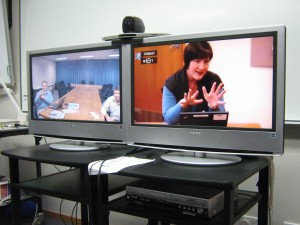Over the last decade a few major themes have dominated the evolution of product development, particularly software development: a shift towards agile practices, customer-centric decision-making, and better integration and collaboration across disciplines. The last of those – the increasing porousness between the “Big Three” disciplines of product management, design, and engineering – is evolving the most rapidly. The tenets of Agile development are fairly mature at this point. Customer development and Lean practices are now considered conventional wisdom. But the ways in which designers, product managers, and engineers work together are in flux. The boundaries between the Big Three pillars of product development are just beginning to blur.
Design has changed the most dramatically and had the most significant impact on engineering and product management. A decade ago design was little more than static mockups or graphic treatments of engineering output. Today, not only is design key to creating successful products at all stages of the lifecycle, it has also become a viable strategic differentiator for the companies that do it best. Design as a discipline has always encompassed more than just the façade (the “chrome” as we called it before Google appropriated the word). In software, however, only recently has design been acknowledged as a major strategic input. Product managers are the voice of the customers, but designers are the voice of the humans.
Designers in software have also become more rigorous and technically proficient. A shiny mockup that gives a good first impression was all a good designer used to have to make. Today we expect the design process to start from a clear set of first principles derived from a deep understanding of the people using the product. We expect designers to understand information architecture and to create a consistent, reasoned visual vocabulary and a sensible flow. We expect designers to intimately understand the capabilities of the technologies used to implement their ideas, and increasingly we see designers with substantial software development experience working with the same tools as engineers.
The evolution of design has impacted product managers and engineers as well. Product managers are now expected to understand and utilize design thinking. Engineers need to be conversant in the design vernacular and are becoming increasingly skilled in basic design principles. These cross-pollinations are a healthy development, and as the last vestiges of linear, waterfall-style processes fall away, teams are looking for ways to integrate their efforts and break free of assembly-line metaphors (GANTT charts are not exactly in fashion in software development). Classic Scrum orthodoxy has also left teams looking to loosen the bottleneck created by a single Product Owner who must be the conduit between the entire business and the Team. At the previous two Products Are Hard conferences, for example, we saw a great deal of interest in talks about ways to better integrate designers into the development process.
We use the world “holistic” to describe this evolving approach because of the convergence of disciplines, processes, and strategies that are all based on integrating across disciplinary boundaries. Designers, product managers, and engineers are influencing each other and are working more closely than ever before. We have built new processes to favor responsiveness and experimentation over predictability and certainty. We have pushed our business strategy to be more informed and harmonized with the human needs and desires of those we build for.
We’re curious about your experiences. Are you seeing a similar trend? Different trends? Let us know: @productsarehard

